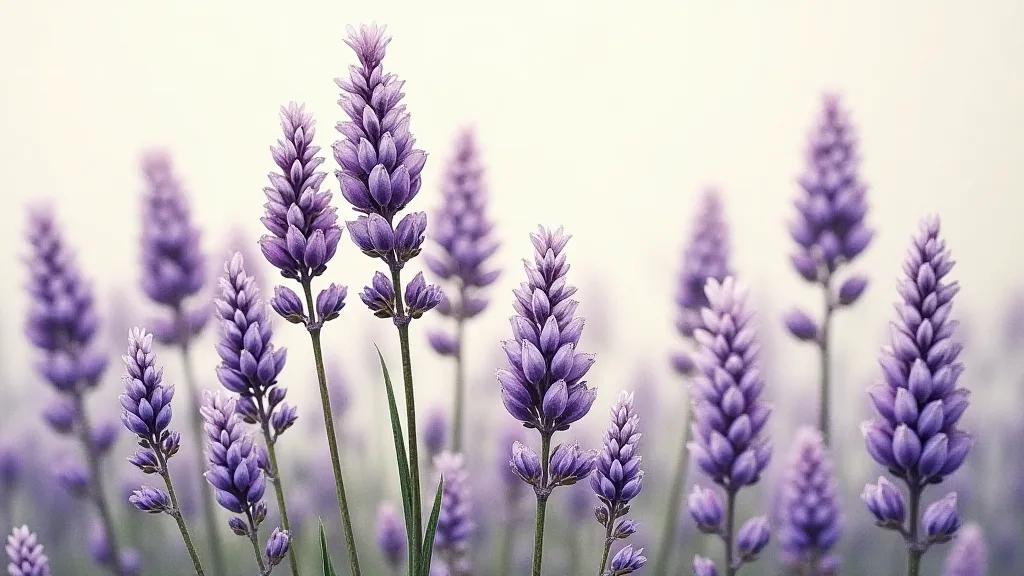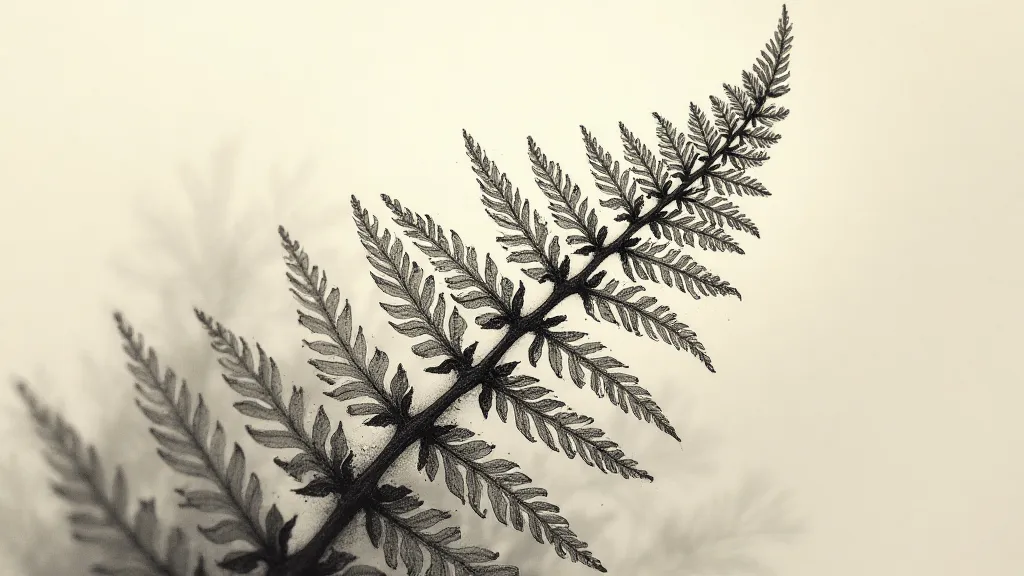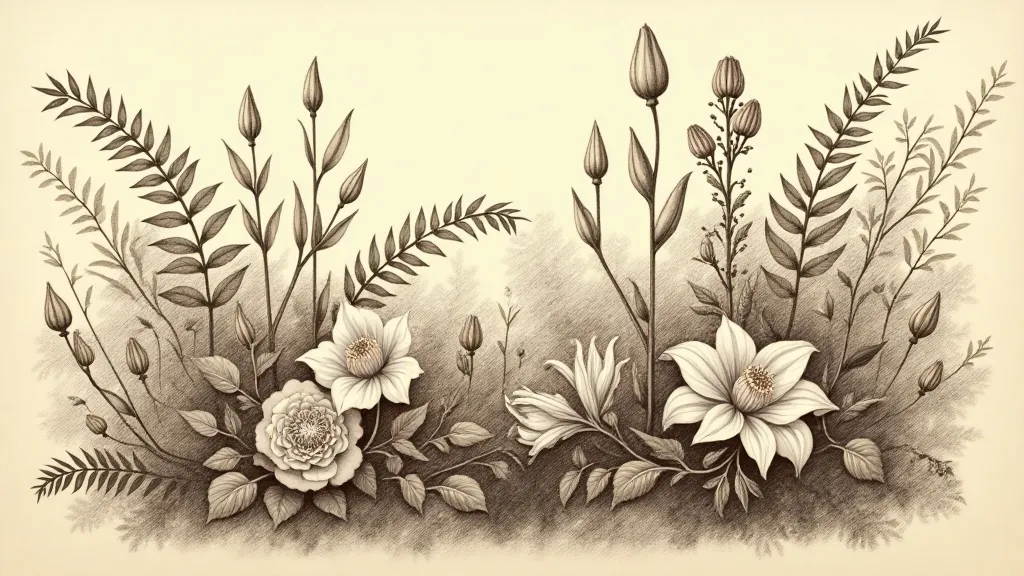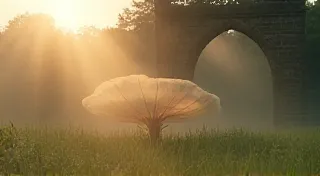The Bloom's Echo: Creating Depth through Atmospheric Perspective
There’s a particular kind of melancholy that settles over me when I think of antique accordions. Not sadness, exactly, but a poignant awareness of time, of hands long gone that coaxed music from bellows and keys. They whisper stories of ballrooms echoing with waltzes, of travelling musicians sharing melodies under starlit skies, and of families gathered close, the accordion’s music weaving its way into their shared memories. These instruments, often beautifully ornamented with intricate carvings, are physical manifestations of history, tangible connections to a past brimming with artistry and human expression. Just as with these accordions, botanical illustration, at its finest, strives to capture not just the surface appearance of a plant, but the very essence of its being, its place in a landscape, its interaction with the atmosphere.
The act of translating the ephemeral beauty of nature onto paper is already a challenge. But to create a truly compelling botanical illustration – one that feels alive and believable – requires a deeper understanding of perspective. And I’m not just talking about linear perspective, the rules we learn in art class about vanishing points and horizon lines. I’m talking about atmospheric perspective, also known as aerial perspective, which is the key to creating a convincing sense of depth and realism.
Understanding the Principles of Atmospheric Perspective
Atmospheric perspective operates on the simple principle that objects further away appear lighter, less detailed, and bluer than objects closer to us. This is because the light traveling from distant objects has to pass through more of the atmosphere. The atmosphere scatters and absorbs that light, effectively “softening” the image and filtering out colors. Essentially, the air itself becomes part of the subject.
Think about a distant mountain range on a hazy day. You can still discern the peaks, but they appear muted, almost transparent, and often take on a bluish tinge. This isn't an optical illusion; it's a direct consequence of the atmosphere's effect on light.
In botanical illustration, this applies to everything from individual leaves and petals to entire branches and floral clusters. Closer elements should be rendered with sharp lines, rich tones, and a full range of detail. As elements recede into the distance, their lines should become softer, their colors should become lighter and desaturated, and the level of detail should diminish.

Applying Atmospheric Perspective in Pen and Ink
Working in pen and ink presents a unique set of challenges when it comes to atmospheric perspective. Unlike watercolor, where you can easily mix lighter washes to represent distance, with pen and ink, you're largely limited to variations in line weight and density. However, this limitation can be embraced and turned into a strength.
Here are a few techniques to consider:
- Line Weight: Use thicker, bolder lines for elements in the foreground and gradually decrease the line weight as the elements recede. This is arguably the most crucial aspect.
- Line Density: More densely hatched areas appear closer, while sparser hatching suggests distance. This is especially effective for shading leaves and petals. Don't be afraid to leave areas completely un-shaded to create a sense of lightness and airiness in the background.
- Hatching Direction: Consider subtly altering the direction of your hatching. Parallel lines tend to emphasize closeness, while radiating or curved hatching can create a sense of depth and movement.
- Negative Space: More defined and prominent negative space around foreground elements helps to separate them from the background.
It's important to remember that atmospheric perspective isn't about simply making distant objects look "faded." It’s about creating a believable illusion of space, a feeling that the plant exists within a three-dimensional environment.
The Importance of Observation
Like the restoration of an antique accordion – a task requiring patience, meticulous attention to detail, and a deep respect for the instrument's history – achieving convincing atmospheric perspective in botanical illustration demands careful observation. You need to truly *see* how distance affects the appearance of objects in the natural world. Spend time studying landscapes, noting how colors shift and details soften as they recede. Observe how the air itself seems to create a veil between you and the distant scenery.
It's helpful to find a subject and analyze it from multiple viewpoints. Imagine the scene broken down into layers: foreground, middle ground, and background. How does the light interact with each layer? How do the colors and details change?
The beauty of antique accordions also lies in their imperfections, the subtle wear and tear that speaks to their journey through time. Similarly, in botanical illustration, don't strive for sterile perfection. Embrace the nuances of your rendering – the slight variations in line weight, the subtle shifts in tone. These imperfections add character and realism to your artwork.

Beyond the Surface: A Deeper Connection
Just as collecting antique accordions isn’s merely about acquiring instruments, it's about connecting with the stories and craftsmanship that shaped them. Likewise, botanical illustration, when approached with intention, becomes more than just a technical exercise. It becomes a way to deepen your appreciation for the natural world and to communicate that appreciation to others.
When you master the principles of atmospheric perspective, you're not just creating a visually appealing image. You're creating a window into a world of light, space, and atmosphere. You're capturing the essence of a plant in its environment, conveying a sense of depth and realism that transcends the two-dimensional surface of the paper.
A Few Final Thoughts
The process of understanding and applying atmospheric perspective takes time and practice. Be patient with yourself, experiment with different techniques, and most importantly, observe the world around you with a keen eye. Remember that the greatest illustrations are those that not only capture the appearance of a subject, but also convey a sense of emotion and connection – a feeling, much like the music of an antique accordion, that lingers in the heart long after the final note has faded.






